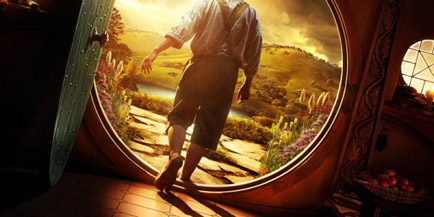|
|
Movie Review: The HobbitBy Matthew HuntleyDecember 20, 2012
I’m still not sold on Jackson’s decision to shoot it at 48 frames per second (the standard is 24) as a means of giving it more detail; the effect actually makes the action appear sped up and the camera motion jerky, although I’m willing to accept this could be my eyes and brain not being used to it. Ultimately, however, the film is technically superior, especially in its long and aerial shots underneath and above Middle Earth’s mountains. On a narrative level, the film is jolly and exciting, light and dark, and all-around fun. I know many people will extend their praise well beyond that, but I wonder if their opinions are simply a reflection of the giddiness they feel upon coming returning to this world and the memories of the former series, not to mention the book they probably enjoyed as kids. Regardless, I happen to have recently read Tolkien’s book and can veritably say that Jackson’s film captures its innocent spirit and humor. He fortunately keeps it within the realm of children’s fantasy and resists the urge of making it too dark, violent or gloomy just to cater to the older and more mature LOTR audience. Not that he couldn’t have done this and still made it worth our while, but I believe Jackson’s intentions were to be faithful to Tolkien’s prose, and that approach works because we seem inherently more willing to accept children’s fantasy over adult, perhaps because the concept of fantasy is inextricably linked to - and the product of - our inner child.
|

|
|
|

|
Thursday, October 31, 2024
© 2024 Box Office Prophets, a division of One Of Us, Inc.


